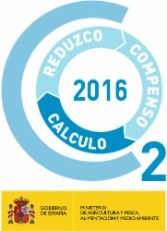
Wednesday 20th December 2017
CALVIÀ TOWN HALL REGISTERS ITS CARBON FOOTPRINT
The calculation of the carbon footprint is an opportunity for improvement in municipal management, as it provides a tool to reduce the costs involved in the consumption of energy in buildings, facilities, etc.
The Cities for Climate Spanish Network has launched, for the third time, its Carbon Footprint Calculation and Registration programme, with the aim of achieving at least a hundred calculated and registered footprints from the network members.
The Carbon Footprint describes the total amount of CO2 emissions and other greenhouse gases (GHG) that are caused directly or indirectly by an individual, organisation or event.
The municipality that calculates its carbon footprint has as main advantage the identification of opportunities to reduce GHG emissions. Most of them are derived from the reduction of energy consumption through good practices, thus obtaining economic savings.
Calvià Town Hall considered very positive the participation in this project and therefore from the Urban and Natural Environment Service they have been gathering and contributing the necessary consumption data to be able to calculate the local administration footprint of the last two years (2015 and 2016), in addition to attending both the "XI Cities for Climate Network Assembly" held in Logroño on 2nd and 3rd November, and the training day "Municipal Carbon Footprint Calculation Training Programme" organised from the Spanish Federation of Municipalities and Provinces (FEMP) and the Spanish Office for Climate Change of the Ministry of Agriculture and Fisheries and the Environment, held in Madrid on 15th November.
The carbon footprint calculation is an opportunity for improvement in municipal management, as it provides a tool to reduce the costs involved in energy consumption for lighting, air conditioning, heating and transportation, and on the other hand, contributes to the reduction of GHG emissions and greater environmental awareness. From 2015 to 2016, the measurements made in buildings, facilities, etc., of the local administration of Calvià Town Hall have seen a decrease in emissions going from a range of 10,207.28 t CO2eq in 2015 to 9,116. 79 t CO2eq in 2016.
The Royal Decree establishing the Carbon Footprint Registry states that organisations registered in the carbon footprint and reduction and / or compensation commitments section may use a seal of the Ministry of Agriculture and Fisheries, Food and Environment (MAPAMA) ownership.
The seal is born with a double purpose. On the one hand, it makes it easier for organisations to demonstrate their participation in the registry and, on the other hand, it allows them to reflect the degree of effort undertaken by them in the fight against climate change. In this sense, it distinguishes between those organisations that calculate their carbon footprint and are on the path of reducing their emissions from those that already reduce and / or compensate. The seal, therefore, allows to identify, for a defined period (annual), three levels of participation: calculation of the carbon footprint, its reduction and / or compensation.
The Ministry of Agriculture and Fisheries, Food and Environment, through the Spanish Office for Climate Change (OECC) has recently notified the Calvià Town Hall's registration in the carbon footprint, compensation and carbon dioxide absorption projects registry, by delivering the authorisation to use the CALCULUS seal for the years 2015 and 2016.
From now on, a new stage begins to try to achieve the second level of this ministerial seal (REDUZCO), through the implementation of various emission reduction projects.




